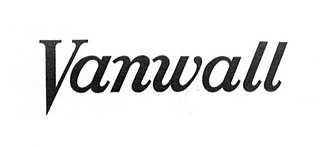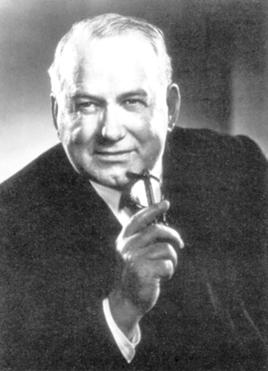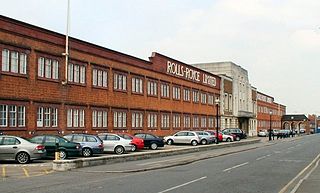Related Research Articles

Sir Frederick Henry Royce, 1st Baronet, was an English engineer famous for his designs of car and aeroplane engines with a reputation for reliability and longevity. With Charles Rolls (1877–1910) and Claude Johnson (1864–1926), he founded Rolls-Royce.

Edwin Duncan Sandys, Baron Duncan-Sandys, was a British politician and minister in successive Conservative governments in the 1950s and 1960s. He was a son-in-law of Winston Churchill and played a key role in promoting European unity after World War II.

Vanwall was a motor racing team and racing car constructor that was active in Formula One during the 1950s. Founded by Tony Vandervell, the Vanwall name was derived by combining the name of the team owner with that of his Thinwall bearings produced at the Vandervell Products factory at Acton, London. Originally entering modified Ferraris in non-championship races, Vanwall constructed their first cars to race in the 1954 Formula One season. The team achieved their first race win in the 1957 British Grand Prix, with Stirling Moss and Tony Brooks sharing a VW 5, earning the team the distinction of constructing the first British-built car to win a World Championship race. Vanwall won the inaugural Constructors' Championship in Formula One in 1958, in the process allowing Moss and Brooks to finish second and third in the Drivers' Championship standings, winning three races each. Vandervell's failing health meant 1958 would be the last full season; the squad ran cars in a handful of races in the following years, but finished racing in 1961.

The Tank, Cruiser, Challenger (A30) was a British tank of World War II. It mounted the QF 17-pounder anti-tank gun on a chassis derived from the Cromwell tank to add anti-tank firepower to the cruiser tank units. The design compromises made in fitting the large gun onto the Cromwell chassis resulted in a tank with a powerful weapon and reduced armour. The extemporised 17-pounder Sherman Firefly conversion of the US-supplied Sherman was easier to produce and, with delays in production, only 200 Challengers were built. The Challenger was able to keep up with the fast Cromwell tank and was used with them.

Walter Owen Bentley, MBE was an English engineer who founded Bentley Motors Limited in London. He was a motorcycle and car racer as a young man. After making a name for himself as a designer of aircraft and automobile engines, Bentley established his own firm in 1919. He built the firm into one of the world's premier luxury and performance auto manufacturers, and led the marque to multiple victories at the 24 Hours of Le Mans. After selling his namesake company to Rolls-Royce Limited in 1931, he was employed as a designer for Lagonda, Aston Martin, and Armstrong Siddeley.

The Rolls-Royce Meteor later renamed the Rover Meteor is a British tank engine that was developed during the Second World War. It was used in British tanks up to 1964. It was a result of co-operation between Leyland Motors and Rolls-Royce who between them in 1941 had suggested that a specialised de-rated version of the Merlin aero-engine would be highly suitable for use in armoured fighting vehicles.

The Rolls-Royce Silver Dawn is a full-size luxury car that was produced by Rolls-Royce at their Crewe works between 1949 and 1955. It was the first Rolls-Royce car to be offered with a factory built body which it shared, along with its chassis, with the Bentley Mark VI until 1952 and then the Bentley R Type until production finished in 1955. The car was first introduced as an export only model. The left hand drive manual transmission models had a column gear change, while right hand drives had a floor change by the door. Only with the R Type based model was it officially available on the home market, from October 1953.

Ernest Walter Hives, 1st Baron Hives, was the one-time head of the Rolls-Royce Aero Engine division and chairman of Rolls-Royce Ltd.

The Rolls-Royce Phantom IV is a British automobile produced by Rolls-Royce. Only eighteen were made between 1950 and 1956. They were only built for buyers whom Rolls-Royce considered worthy of the distinction: the British royal family and heads of state. Sixteen are currently known to still exist in museums as well as in public and private collections.
This article lists British armoured fighting vehicle production during the Second World War. The United Kingdom produced 27,528 tanks and self-propelled guns from July 1939 to May 1945, as well as 26,191 armoured cars and 69,071 armoured personnel carriers.

Rolls-Royce was a British luxury car and later an aero-engine manufacturing business established in 1904 in Manchester by the partnership of Charles Rolls and Henry Royce. Building on Royce's good reputation established with his cranes, they quickly developed a reputation for superior engineering by manufacturing the "best car in the world". The business was incorporated as Rolls-Royce Limited in 1906, and a new factory in Derby was opened in 1908. The First World War brought the company into manufacturing aero-engines. Joint development of jet engines began in 1940, and they entered production. Rolls-Royce has built an enduring reputation for development and manufacture of engines for defence and civil aircraft.
Sir Henry Spurrier was a British engineer and industrialist, and the third generation of the Spurrier family to head Leyland Motors.
Jack Olding of Hatfield, Hertfordshire, England had a company, which specialised in the import and modification of tanks and tractors during the Second World War.

John Polwhele Blatchley was a London-born car designer known for his work with J Gurney Nutting & Co Limited and Rolls-Royce Limited. He began his career as designer with Nutting in 1935, moving up to Chief Designer before leaving in 1940 to join Rolls-Royce. There he served as a draughtsman (1940–43), stylist in the car division (1943–55), and chief styling engineer (1955–69).
The Ford GAA engine is an American all-aluminum 32-valve DOHC 60-degree liquid-cooled V8 internal combustion engine with a flat plane crankshaft designed and produced by the Ford Motor Company before and during World War II. It features twin Stromberg NA-Y5-G carburetors, dual magnetos and twin spark plugs making up a full dual ignition system, and crossflow induction. It displaces 1,100 cu in (18 L) and puts out well over 1,000 pound-feet (1,400 N⋅m) of torque from idle to 2,200 rpm. The factory-rated net output was 500 hp (370 kW) at 2,600 rpm.
Arthur Alexander Cecil Rubbra CBE was an English engineer who designed many of Rolls-Royce's successful aero engines. He was "placed by many alongside Royce, Rowledge and Elliot as one of Rolls-Royce's greatest engineers...".
Claude Goodman Johnson was a British motor vehicle manufacturer who was instrumental in the creation of Rolls-Royce Limited.
Adrian Albert "Lom" Lombard, CBE was an English aeronautical engineer. Despite having no formal training in aerodynamics, he became one of the world's foremost designers of jet engines. He was involved with the Rolls-Royce company in a variety of roles for almost 30 years.

The Rolls-Royce B range was a range of petrol engines first intended to be installed in a car but in 1943 developed into a range to power the British Army's wheeled vehicles.
William Arthur Robotham was a Rolls-Royce executive involved in the development of Rolls-Royce cars, during World War II of tanks and tank engines, and post-war of Rolls-Royce and Bentley cars complete with bodies and then of industrial petrol and diesel engines.
References
- Rolls-Royce website
- Lambert, J and Al Ross (1990) Allied Coastal Forces of World War II Conway.